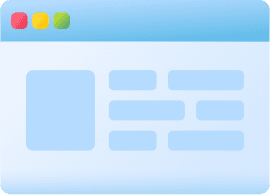Description
Cholesterol disorders involve abnormal levels of cholesterol or lipids in the blood, increasing the risk of cardiovascular diseases. Understanding the causes, diagnostic criteria, and treatment options is crucial for effective management. Types of Cholesterol Disorders Hypercholesterolemia (High Cholesterol): Elevated levels of low-density lipoprotein cholesterol (LDL-C) and/or total cholesterol. Primary Causes: Familial hypercholesterolemia (genetic disorder). Secondary Causes: Poor diet (high in saturated/trans fats). Sedentary lifestyle. Conditions like hypothyroidism, diabetes, nephrotic syndrome. Hypertriglyceridemia: High triglyceride levels, often associated with low high-density lipoprotein (HDL-C). Primary Causes: Genetic factors (e.g., familial hypertriglyceridemia). Secondary Causes: Obesity, excessive alcohol intake, poorly controlled diabetes, medications (e.g., corticosteroids). Mixed Dyslipidemia: A combination of elevated LDL-C, triglycerides, and low HDL-C. Often associated with metabolic syndrome or type 2 diabetes. Hypocholesterolemia: Rare and often due to underlying conditions like hyperthyroidism, chronic infections, or malabsorption. Symptoms Asymptomatic in most cases. Severe cases may lead to: Xanthomas: Cholesterol deposits in tendons or skin. Arcus corneae: Cholesterol deposits around the cornea. Complications: Angina, heart attacks, or strokes. Diagnosis Lipid Profile Test (Fasting or Non-Fasting): Total cholesterol. LDL-C ("bad" cholesterol). HDL-C ("good" cholesterol). Triglycerides. Additional Tests: Lipoprotein(a): For assessing genetic risk. Apolipoproteins: ApoB and ApoA1. Genetic testing: For familial hypercholesterolemia. Risk Assessment: Use tools like the ASCVD (Atherosclerotic Cardiovascular Disease) risk calculator to assess cardiovascular risk and guide treatment. Treatment Management of cholesterol disorders focuses on lifestyle modifications and, if needed, medications. 1. Lifestyle Modifications: Diet: Limit saturated fats, trans fats, and cholesterol-rich foods. Increase intake of fiber, fruits, vegetables, and omega-3 fatty acids. Use plant sterols/stanols to reduce cholesterol absorption. Exercise: Engage in at least 150 minutes of moderate-intensity aerobic exercise per week. Weight Management: Aim for a healthy weight to reduce LDL-C and triglycerides while increasing HDL-C. Avoid Smoking and Excessive Alcohol: Smoking lowers HDL-C, while alcohol can raise triglycerides. 2. Medications: Statins (HMG-CoA Reductase Inhibitors): First-line therapy for lowering LDL-C. Examples: Atorvastatin, rosuvastatin, simvastatin. Ezetimibe: Reduces cholesterol absorption in the intestine. Used alone or with statins. PCSK9 Inhibitors: Lower LDL-C significantly by promoting LDL receptor recycling. Examples: Evolocumab, alirocumab. Bile Acid Sequestrants: Bind bile acids in the intestine to reduce cholesterol. Examples: Cholestyramine, colesevelam. Fibrates: Primarily used to lower triglycerides and raise HDL-C. Examples: Fenofibrate, gemfibrozil. Niacin (Vitamin B3): Raises HDL-C and lowers triglycerides, though less commonly used due to side effects. Omega-3 Fatty Acids: Reduce triglycerides. Prescription-strength omega-3s like icosapent ethyl may be used. 3. Advanced Therapies (for Severe or Refractory Cases): Lipoprotein Apheresis: Removes LDL-C and lipoprotein(a) from the blood, typically for familial hypercholesterolemia. Gene Therapy: Emerging options like inclisiran (a siRNA therapy targeting PCSK9). Complications of Untreated Cholesterol Disorders Cardiovascular Diseases: Coronary artery disease, myocardial infarction (heart attack), stroke. Peripheral Artery Disease (PAD): Reduced blood flow to the limbs. Pancreatitis: Severe hypertriglyceridemia (>1000 mg/dL). Monitoring Regular follow-up lipid profiles. Monitor for medication side effects (e.g., liver enzymes with statins). Key Takeaway: Early identification and treatment of cholesterol disorders can significantly reduce the risk of cardiovascular complications. Lifestyle changes remain the cornerstone of management, with medications added for those at higher risk or with severe dyslipidemia.


